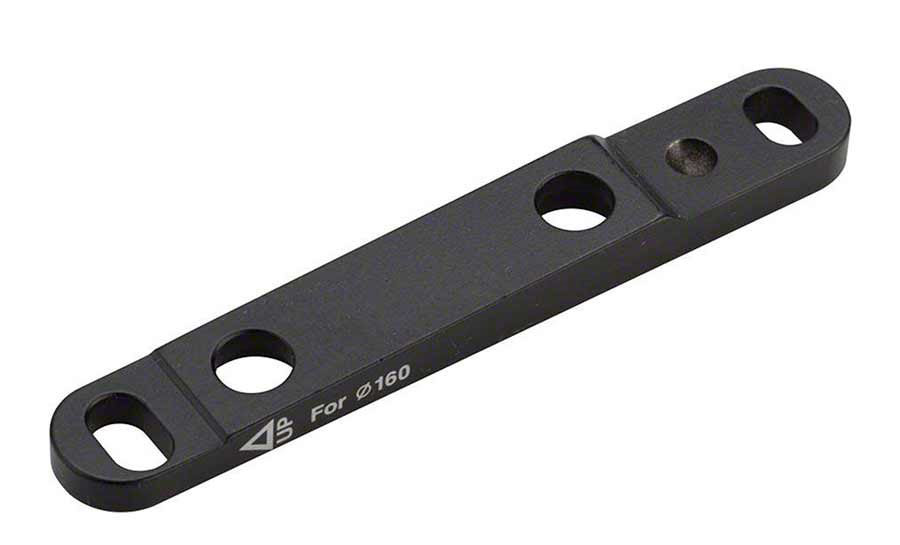One bit of newfangled modern tech encountered on the Salsa Cutthroat build were the brakes specified on the V2 Cutthroat.
The V2 Salsa Cutthroat specifies Flat-mount Calipers front and rear. If you’re into tarmac you have probably come across these on recent-model road bikes. For everyone else, especially those from a MTB background, you may be asking – What on Earth is Flat-mount?
Flat-Mount Calipers
Rather than regurgitate existing info, here’s a pretty accurate primer:
Gravel bike tech: Post-mount vs. Flat-mount
The Author’s first key take-away sums it up nicely:
“Did we need flat-mount? No, but it’s here and it’s a done deal as Shimano only offers its road/gravel groups with flatmount brakes.”
Road and gravel bike forks are designed to take either a 140mm or 160mm rotor, whereas Salsa’s Cutthroat V2 fork appears to be uniquely designed to fit a flat-mount caliper with a 180mm rotor.
So trying to find any information about flat-mount brakes will probably lead you to roady forums, populated primarily by shouty roadies who just want to Shut You Down for asking a question.
If you dare to ask about 180mm flat-mount brackets, you’ll likely experience the wrath of roadies worldwide who can’t possibly fathom why anybody would want to run a 180mm rotor on anything, for any reason, ever.
I asked Salsa what I’d need prior to the frame arriving, just to check I had all the correct parts. Even they gave me the wrong answer, telling me that I just use the bracket that comes with a front flat mount caliper:

This bracket can be used in two orientations – you just flip it around for different rotor sizes.
I accepted the answer from Salsa as they indicated they’d just moved the mounting holes 20mm higher up the fork leg, so the 140/160 would now become a 160/180 bracket.
Of course, when the frameset arrives and I start trying to fit my massive rotor, it’s clear that this isn’t the way to do it. Even though some of the holes line up, the bracket isn’t thick enough to clear the rotor.

Cutthroat Carbon Deluxe v2 Fork
So what have Salsa done here?
Basically, they’ve used the same design as a 35mm thick chainstay for the fork mount. Therefore what I actually needed was another one of these, a Shimano ‘+20mm’ block (SM-MA-R160-DD):

Day 2 of the build was spent running around all the bike shops in town. Nelson isn’t a particularly big roadie city, but luckily I found one.
Of course, the bolts are different too as they go through the fork, just like a chainstay, instead of the traditional flat-mount bolts that come with the caliper.
The correct bolts are Shimano’s ‘Brake Caliper Mounting Bolt C’. These come in various lengths depending on the thickness of your chainstay – or in this case my fork leg. I wasn’t waiting a week for a couple of bolts, even if they do have funny special ends, so headed to the local fasteners store for a couple of M5 x 50mm bolts (Socket-head cap screws if we’re getting technical – these take a 4mm allen key).
Using the 2mm fat washers that come with the bracket put them around the correct length and they cinch up nicely.

The ‘ServoWave’ action used in the GRX models originated in Shimano’s MTB brake levers. I’ve always found they are a little On / Off for my liking on trail bikes, but the GRX brakes seem to work well with plenty of modulation.
Giving the option for a larger rotor up front is a good move from Salsa, especially for a fast bikepacking rig. With the lines between Gravel bikes and Bikepacking race bikes getting ever more blurry, I think we could see more gravel bikes being designed like this in future.
For full details of the components used on the Salsa Cutthroat build, be sure to check out this post.
Update: Salsa have now amended their website with more details on the design specification of the fork and are recommending a 42mm Mounting bolt.
Shimano recommends a longer bolt for the 35mm frame standard however, a 48mm Mounting Bolt C (P/N: Y8N208040). It’s probably worth checking with your LBS if you’re not feeling experimental!

